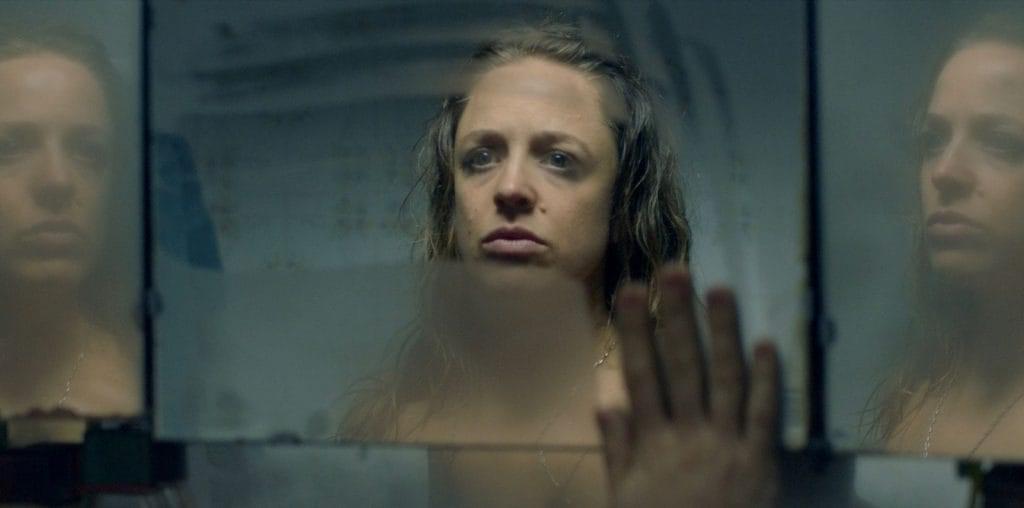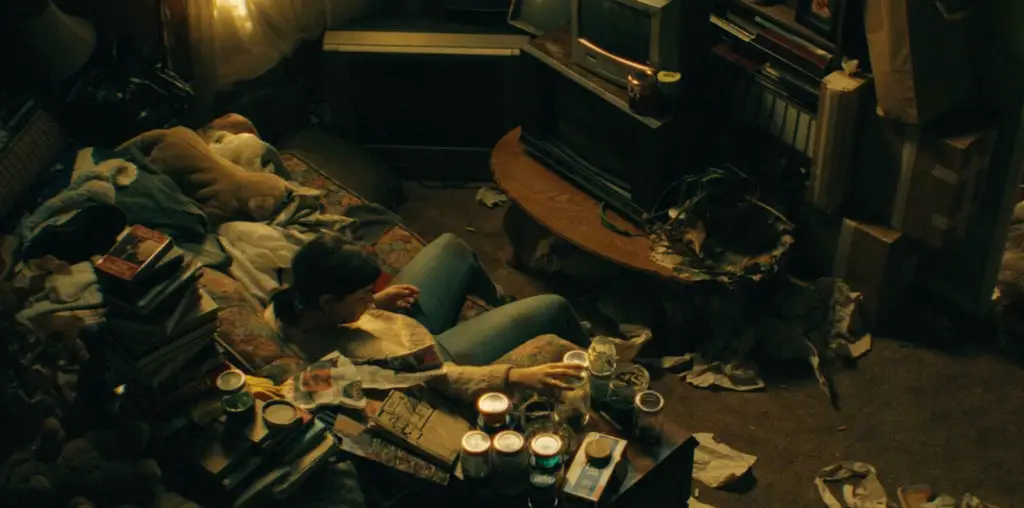
The old adage, “Time and tide wait for no man,” is not very popular these days. In fact, not only do many people dispute this philosophy, they’re downright aggressive about stopping time any way they can. Since obsessions about aging are best explored through the media, cinema seems the ideal venue to peek into the lives of others and learn if our neighbors hold some antidote to the yet uncured, epidemic of impending senility.
The first cinematic version of Mary Shelley’s “Frankenstein,” was produced by the Edison Company, in the year 1910. In this film, as in Shelley’s story, Dr. Frankenstein attempts to stop death by creating a being from various found body-parts. Unfortunately, the mad- scientist runs into problems when it comes to the Being’s brain— and we all know what happens next. Many versions of “Frankenstein,” were created after 1910, some even more disturbing than the first. But whether one prefers the spine-chilling versions, or the comic, “Young Frankenstein,” movies about Frankenstein illustrate the dilemma of aging—and the ethics of trying to stop it—very clearly.
These days, the undead-Vampire has regained popularity. “Vampyr” is a classic, Danish horror film that was directed by Carl Theodor Dreyer, in 1932. Though the film was a talkie, Dreyer opted to use minimal dialogue and intertitles, much like earlier, silent films. In “Vampyr,” a young traveler named Allan Grey is troubled by recurring dreams of supernatural entities invoking death. Grey soon arrives at an ancient inn where his visions appear even in his waking hours. At the inn Grey meets Leona, a beautiful young woman who is both possessed, and inexplicably dying of mysterious bites upon her neck.In Dreyer’s movie, an iron stake through Vampyr’s heart—stops death in its tracks, and allows the good characters in the film to live happily ever after. Here aging, death, and the undead are all considered morally corrupt, and something only the good can eliminate.
In the movies, aging and death are often halted or abolished, through magic. In the 1937 film, “Lost Horizon,” a British, diplomat/journalist named Robert Conway, is sent on assignment to China to make a daring rescue. Instead, Conway’s plane crashes in the Himalayas, and he becomes lost. Conway finds himself in Shangri-La, a magical community where he falls in love with the beautiful, young Sondra Bizet. Conway is promised eternal youth, provided he remains in Shangri-La. After a while, Conway sees no reason why he shouldn’t bring his beloved back to England, and he and Sondra prepare to leave. Sadly, the instant Sondra walks a few feet down the road she rapidly ages and crumples to dust.
In real life, a rare syndrome called Progeria affects certain individuals, and causes an extremely rapid aging process. Children who acquire Progeria seldom live beyond their mid-teens, and appear to have the faces and bodies of octogenarians at the time of their deaths. Interestingly, there are not many films that address Progeria in any meaningful way, with the exception of the now out of print, made-for-TV movie, “The Three Wishes of Billy Grier.” In this Emmy Award winning film of 1984, 15-year-old Billy learns that he is dying of old age after he goes to the doctor complaining of what he believes to be pain from a sports-related injury. After coming to terms with his condition, Billy sets out to live three wishes: to play the saxophone well, meet with his estranged father, and to make love to a woman.
“The Curious Case of Benjamin Button,” is a 2008, multiple-Academy Award winning film directed by David Fincher, which stars Brad Pitt. Based upon a short story of the same name, by novelist, F. Scott Fitzgerald, “Button” is Fitzgerald’s reaction to Progeria, in the form of a fantasy. In Fincher’s film, the infant Benjamin survives after his mother dies in childbirth. When Benjamin’s father sees that the baby looks like an old man, he quickly wraps Benjamin in a blanket and leaves him on the steps of a nursing home.As Benjamin grows older, he fits in very well with the other residents. At one point, however, Benjamin mysteriously begins aging backwards, and soon the seemingly old man becomes a handsome youth who goes off to war, has a series of adventures, and falls in love with the girl-now-young-woman who used to visit her grandmother at the nursing home. As Benjamin reverts to babyhood, his brain continues to age and atrophy, and a classic, happy ending is not possible.
The idea of undying love and acceptance as a means of battling age-ravaging, Alzheimer’s Disease, is addressed in the 2001, Academy Award winning, biographical-film entitled “Iris.” Directed by Richard Eyre and starring Judi Dench, Kate Winslet, and Jim Broadbent, this movie explores the unconventional marriage of philosopher, Iris Murdoch and novelist, John Bayley.
Screened in 2006, the Canadian film “Away from Her,” also explores the brain deterioration related to Alzheimer’s disease—love, and letting go. In this movie directed by Sarah Polley, a woman named Fiona is eventually institutionalized, and her husband, Grant, watches as she gradually forgets their former life and him. Adding to Grant’s burden is that there’s little that he can do when his wife appears to fall in love with a fellow resident at the nursing home. Fiona’s “affair,” calls into question an extra-marital indiscretion that Grant had in the earlier years of their marriage— and poses the notion that Fiona somehow remembered this in spite of her medical condition, and is retaliating.
It is not just those suffering from rare diseases, and the elders that must face the aging crisis, but also very young children, who are forced into the position of companion/caretakers. In the 1966, award-winning film, “A Christmas Memory,” a little boy named Buddy watches while his elderly cousin/best friend, Sook, becomes more and more child-like. Buddy and Sook fly kites together, bake fruitcakes for famous people, and play pranks on mean relatives who frown upon the cousins’ friendship, and don’t understand Sook’s plight. At the same time, Buddy sees far beyond his years, and tries to prevent those relatives that “know best,” from taking away his friend forever.
As filmmakers strive to ward off and defeat death and time, in such classic-fantasies as “Portrait of Jenny,” “The Seventh Seal,” “Death Takes a Holiday,” and “Somewhere in Time,” it is the recent documentary films that are the most provocative of all. It is these “true” cases, that illustrate just how obsessed people are about growing old and what steps they’re willing to take, to permanently eradicate the aging process.
Written and directed by pro-Vegan, Lee Fulkerson in 2011, “Forks Over Knives,” ventures into the great debate between those who advocate and those who abhor animal- based-nutrition—all in the name of public health. The film focuses upon two renowned experts in the field of nutrition: Dr. Caldwell B. Esselstyn, Jr., (an Endocrinologist and Oncological surgeon who believes plant-based nutrition can reverse even the most life threatening diseases), and Dr. T. Collin Campbell, who wrote the “China Study” in 2005, based upon his 20-year study of wealthy and poor inhabitants of China. Campbell concluded that the wealthy, who could afford high priced animal products, tended to develop Cancer at much higher rates than their poorer neighbors who could only afford plant-based foods. While Fulkerson’s filmmaking goals are impressive in this documentary, he doesn’t present the hidden dangers of plant-based nutrition, or suggest a way to educate consumers in their careful use.
In his documentary, of 2009, “How to Live Forever,” Director, Mark Wexler traveled the globe for three years in an attempt to interview the most creative geniuses of our era— all seeking to stop aging and death. In 2008, the filmmaker met the now deceased, 114-year-old, Edna Parker, to try to learn her secret to longevity. He met then 90-year-old author Ray Bradbury, who urged Wexler not to be too obsessed about those nasty truths about aging. Bradbury’s solution was to put those truths in the nearest trash bag, and nail the bag shut.Wexler met the late Jack La Lanne, whose answer to aging was his lifelong pursuit of exercise and juicing. The filmmaker also attended a Ms. Senior America Beauty Pageant, spoke with an 80-something, preparing for her wedding, met a 74-year-old porn star, went to a Cryonics exhibition and spoke with Bio-Gerantologist, Aubrey de Gray about his repair-and-maintenance regime. Unlike the other age-fighters, Wexler’s friend, author, Pico lyer compared age-denial to some sordid craving, and told Wexler that if he didn’t take a vacation from his movie, asap, Wexler would hasten his own death. A point the filmmaker takes to heart, as he pulls down his garage door on both his obsessions and his movie.
The article image is “Elderly man’s face falling apart” via Shutterstock





Really moving discussion about aging! The analyses about the old horrors and vampire movies were particularly interesting. I love film history that’s written like this: in a way that’s actually interesting.
This is a fascinating article on so many levels. Thanks for commenting about Progeria and linking it to cinema in such an understandable way.